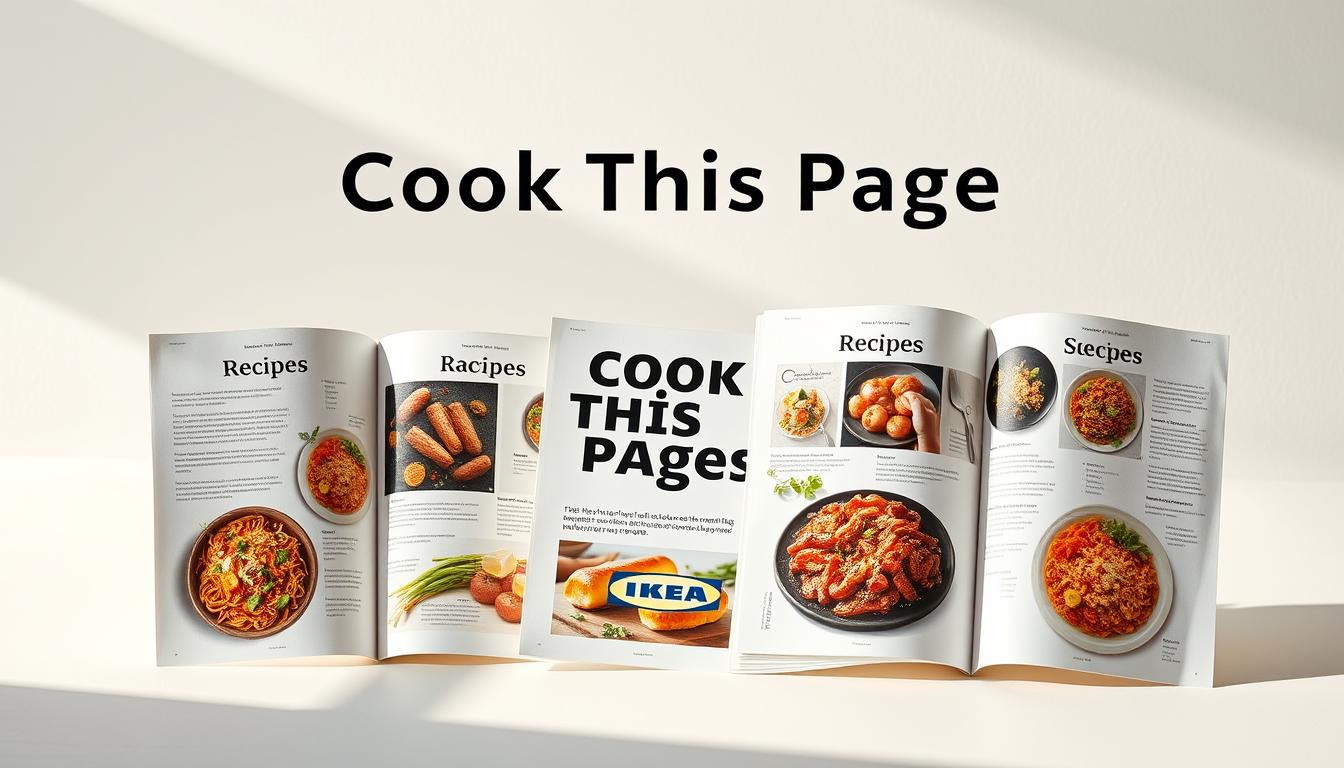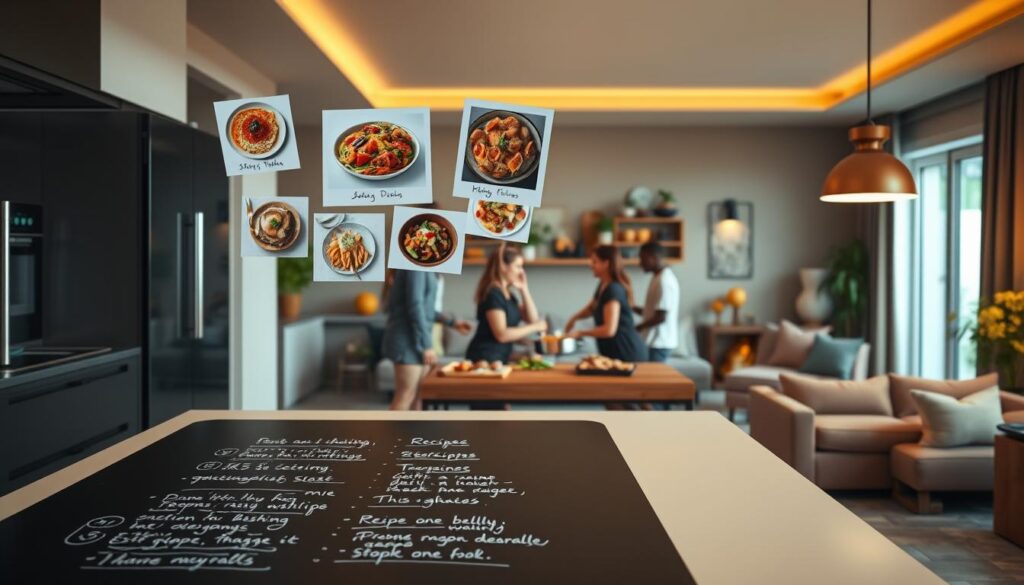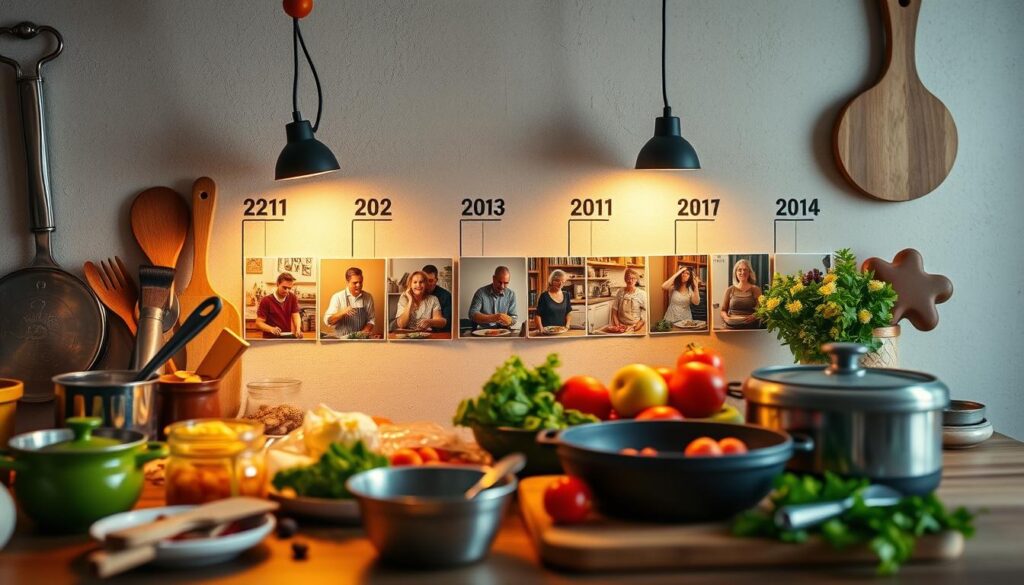
In 2017, IKEA Canada launched a groundbreaking campaign that redefined how people interact with recipes. The “Cook This Page” initiative distributed 12,500 parchment paper recipe books across Canada, and they were all claimed within hours. This innovative approach not only made cooking more engaging but also showcased the brand’s commitment to design innovation.
The campaign featured recipe books printed with edible ink, allowing users to fill in ingredient measurements and cook their creations by wrapping the parchment paper. This creative solution was part of the broader “It Starts with the Food” theme, highlighting IKEA’s focus on blending functionality with fun.
Developed by Leo Burnett, the campaign aimed to demystify cooking for those who found it intimidating. By combining interactive design with practicality, IKEA transformed the traditional recipe book into a hands-on experience. The success of this campaign, which won multiple international awards, demonstrated how innovative thinking can make cooking accessible and enjoyable for everyone.
Introduction: Culinary Innovation Meets Social Media Lessons
Welcome to a fascinating journey where culinary creativity meets digital innovation. The “Cook This Page” campaign by IKEA Canada is a prime example of how design thinking can transform everyday cooking into an interactive experience.
This initiative not only redefined recipes but also showcased how innovative design can simplify cooking. By combining traditional culinary arts with modern digital strategies, the campaign engaged a wide audience, demonstrating the power of creative problem-solving in the kitchen.
As we explore this campaign, we’ll draw parallels with social media platforms. MySpace’s missed opportunities and Facebook’s user-centric approach offer valuable lessons. These insights highlight how design can encourage participation and simplify complex processes, making them accessible to everyone.
| Platform | Strategy | Outcome |
|---|---|---|
| MySpace | Complex features | Overwhelming user experience |
| User-centric simplicity | Massive adoption and engagement |
The success of the “Cook This Page” campaign, with 12,500 recipe books claimed in hours, shows how innovative design can engage national audiences. This section sets the stage for exploring how culinary innovation and social media lessons can inspire everyday design, making it relatable and accessible for every person.
MySpace’s Missed Opportunities: Challenges in Innovation
MySpace once dominated the social media landscape but failed to evolve, leading to its downfall. This decline offers valuable lessons in innovation and user engagement.
Poor User Experience and Engagement Hurdles
The platform’s complicated interface and lack of focus on user needs led to a decline in engagement. As social media evolved, MySpace’s static approach couldn’t compete with more dynamic, interactive ideas.

Users sought simplicity and functionality, which MySpace failed to deliver, highlighting the importance of design in retaining users.
Bad Acquisitions and Strategic Missteps
MySpace’s poor acquisitions and strategic errors contributed to its decline. For instance, its purchase by News Corp in 2005 for $580 million ended with it being sold for just $35 million in 2011.
These missteps, combined with a lack of innovative design, left MySpace unable to compete. The platform’s inability to adapt led to a “blank” slate that never evolved, missing opportunities to innovate.
Learn moreabout failed social networks and the lessons they offer.
MySpace’s story serves as a cautionary tale for modern brands. It emphasizes the need for measured, creative design elements and the importance of adapting to user needs, much like IKEA’s innovative approach to recipes.
Facebook’s Rise to Dominance: Embracing Simplicity and User Focus
Facebook’s journey to becoming a social media giant offers a compelling lesson in the power of simplicity and user-centric design. By focusing on streamlined, intuitive interfaces, Facebook created an environment where users could easily connect and share, setting a new standard for digital platforms.
Zuckerberg’s Focus on Simplicity
Mark Zuckerberg’s strategy emphasized simplicity from the start. Facebook’s clean design made it approachable for everyone, avoiding the clutter that overwhelmed users on other platforms like MySpace. This focus on ease of use helped Facebook grow rapidly, attracting millions of users worldwide.
User-Centric Design Strategies
Facebook’s success lies in its ability to prioritize user needs. By listening to feedback and continuously refining the platform, Facebook ensured that its features were both functional and engaging. This user-centric approach mirrored the simplicity of IKEA’s “Cook This Page” campaign, which transformed cooking into a fun, interactive experience.
Just as IKEA’s campaign made cooking accessible, Facebook made social networking intuitive. The platform’s design encouraged participation, whether it was sharing updates, photos, or connecting with friends. This “deliciously simple” approach resonated with users, much like how IKEA’s innovative recipe books made cooking feel effortless.
| Feature | MySpace | |
|---|---|---|
| Design Approach | Minimalist, user-friendly | Cluttered, complex |
| User Engagement | High, due to simplicity | Low, due to confusion |
| Growth | Rapid, widespread adoption | Stagnant, eventual decline |
Facebook’s evolution under Zuckerberg demonstrates how streamlined, user-friendly designs can drive growth. This mirrors IKEA’s approach to cooking, where simplicity and creativity go hand in hand. By focusing on the user, both Facebook and IKEA created experiences that were not only enjoyable but also easy to embrace.

Learn more about how e-commerce SEO strategies can enhance your brand’s online presence through simplicity and user focus.
IKEA Cook This Page: An Interactive Campaign Redefining Recipes
In 2017, IKEA Canada introduced a groundbreaking initiative called “Cook This Page,” which revolutionized the way people engage with recipes. This innovative campaign distributed 12,500 parchment paper recipe books across Canada, all of which were claimed within hours, showcasing its immense popularity.
Design Innovation in Action
The campaign featured a unique printing process where measured blanks allowed users to add precise amounts of ingredients like sauce, salt, and chives. The recipe books, printed on parchment paper, could be filled in, rolled up, and used directly in cooking, making the process intuitive and fun. This approach not only simplified cooking but also made it an engaging experience.
Illustrations inspired by food and strategic placements in IKEA stores drove consumer participation. The campaign seamlessly integrated IKEA’s food products into the recipes, promoting the brand while offering practical value to users. An engaging in-store event component encouraged hands-on participation, further enhancing the campaign’s impact.
The “Cook This Page” campaign won numerous international awards, including a Gold Pencil at The One Show. The initiative’s success was supported by creative contributions from Leo Burnett, demonstrating how innovative design can transform cooking into an interactive and enjoyable activity. The use of parchment paper recipes set the campaign apart from traditional cookbooks, inspiring creative home cooks across Canada.

Timeline Challenge: Spot the Pivotal Moments
Take part in our interactive timeline challenge to uncover the pivotal moments that shaped digital innovation. This engaging exercise invites you to pinpoint key turning points where MySpace could have reimagined its strategy and draw parallels with Facebook’s breakthroughs.
How to Participate and Engage with the Challenge
To participate, follow these simple steps:
- Review the timeline of major events in digital innovation.
- Identify moments where MySpace could have adapted its approach.
- Compare these points with Facebook’s strategic decisions.
- Share your insights and reflections on how these turning points influenced the trajectory of digital platforms.
Identifying Key Turning Points in Digital Innovation
Let’s focus on specific milestones from the “Cook This Page” campaign and social media evolutions:
- 2017: The “Cook This Page” campaign distributed 12,500 recipe books printed on parchment paper, all claimed within hours. This innovative event showcased how design could simplify cooking, much like Facebook’s user-centric approach simplified social networking.
- 2005: MySpace’s acquisition by News Corp marked a missed opportunity for innovation, leading to its decline. Meanwhile, Facebook focused on simplicity, avoiding the clutter that overwhelmed MySpace users.
These pivotal moments highlight how design changes, like a recipe printed on paper, can signal broader industry shifts. The campaign’s success, with pre-measured ingredients and engaging events, parallels how one winning moment can drive digital innovation.
Share your thoughts on how these events shaped digital landscapes. Your insights might be featured, making you a standout winner in our challenge!

Explore more on how smart home gadgets are revolutionizing modern kitchens and beyond.
Conclusion
In conclusion, the “Cook This Page” campaign by IKEA Canada stands as a testament to how design innovation can transform everyday tasks into engaging experiences. By reimagining recipes on parchment paper, IKEA simplified cooking, making it fun and interactive for everyone.
MySpace’s decline contrasts sharply with Facebook’s rise, highlighting the importance of simplicity and user-centric design. While MySpace became overwhelmed with complexity, Facebook thrived by focusing on intuitive, easy-to-use features that resonated with its audience.
The campaign’s success, led by Leo Burnett, shows how creativity and practicality can come together to create something truly special. The use of parchment paper for recipes not only made cooking “deliciously simple” but also demonstrated how thoughtful design can turn a blank slate into a winner.
As you reflect on these lessons, consider how they apply to both your kitchen and your own projects. Embrace change, focus on user-friendly design, and remember that innovation can turn even the simplest ideas into something extraordinary. The integration of design, technology, and creativity in this campaign is a powerful reminder of what we can achieve when we think outside the box—or in this case, the kitchen.
For more insights on creating a functional and stylish kitchen, visit IKEA’s kitchen knowledge page to explore their innovative solutions and products.

 IKEA Cook This Page Campaign: Innovative Recipes That Make Cooking Fun
IKEA Cook This Page Campaign: Innovative Recipes That Make Cooking Fun
0 Comment